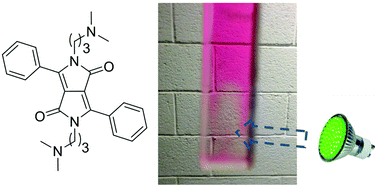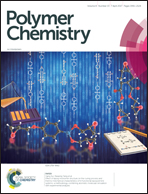New violet to yellow light sensitive diketo pyrrolo–pyrrole photoinitiators: high performance systems with unusual bleaching properties and solubility in water†
Abstract
Eleven diketo pyrrolo–pyrrole (DKPP) derivatives have been synthesized as new high performance photoinitiators and combined with various additives to initiate the free radical polymerization of methacrylates in thin and thick films under visible violet, blue, green, and yellow light irradiation (e.g. LEDs at 405 nm, 470 nm, 477 nm, 520 nm or 565 nm) both in laminate or under air; under red light (@635 nm), their performance is lower. Compared to the well-known camphorquinone or Eosin based systems, most of the novel DKPP based photoinitiating systems exhibit much higher efficiencies. The photopolymerization of thick films (1.4 mm) under air is also feasible. Most of these DKPP structures exhibited excellent bleaching properties and can also be used in water-borne formulations. The photochemically generated reactive species have been investigated by steady state photolysis, cyclic voltammetry, fluorescence, laser flash photolysis and electron spin resonance spin trapping techniques.



 Please wait while we load your content...
Please wait while we load your content...